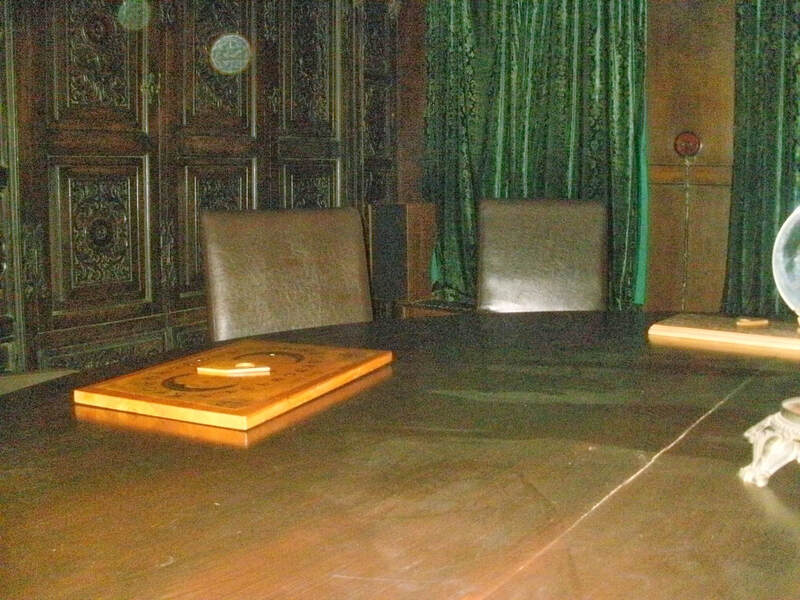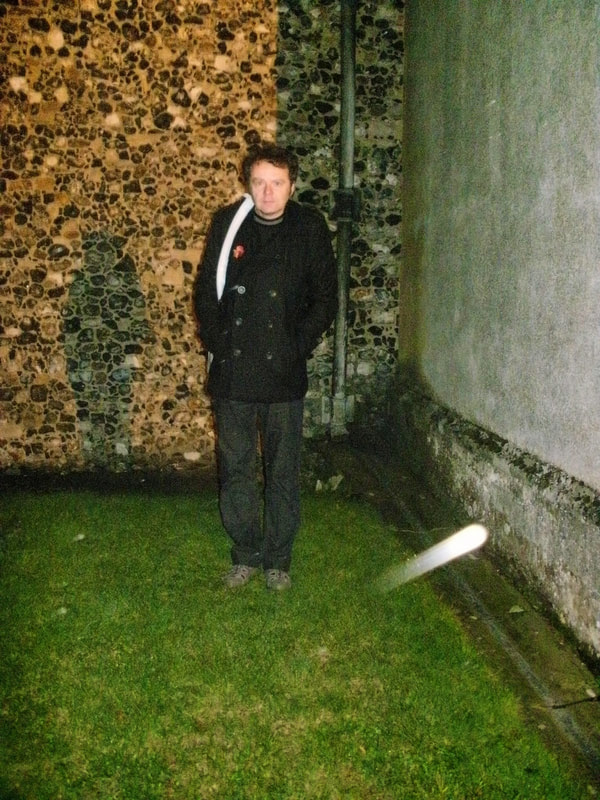The Ghosts of Saxmundham
The town of Saxmundham in Suffolk can trace its origins back to the Saxons and was first mentioned in the Doomsday Book of 1086. The name itself derives from the Saxon 'Seizmond's home'.
Top hat and tails.
A man in Victorian or Edwardian evening dress has been seen walking along High Street. One man is reported to have seen him during a trip to the local fish and chip shop. Upon reaching the shop, he was told by other customers that this was not the first time this ghostly gentleman had been seen.
One house on High Street has been the subject of paranormal activity for the last few years. Parts of the property date back to the 17th century, and a visiting medium confirmed that at least six resident ghosts were active in the building. These included an old priest and a boy.
Orbs have been captured on camera, a woman's sigh has been heard, and a duvet has been pulled off a bed late at night by unseen hands on two occasions.
Monk's Cottages
On South Entrance, beyond the crossroads, can be found a group of small houses bearing the name of Monk's Cottages. They date back to the 17th century and once formed part of a much larger property. They were built on the site of 14th-century chapels, known as chantries, where priests said masses for the recently deceased, generally a benefactor to the chantry, in the belief this would help them pass on from Purgatory to Heaven.
In 2000, one of the cottages was occupied by Doreen Pelletier. In that same year, she decided to clear her cellar of rubble and called in a group of builders to do the job. However, they soon began to complain of ghostly activity, including lights being switched on and off. They finally said enough was enough and quit, suggesting that she contact an exorcist.
Doreen learned that previous owners had also experienced ghostly activity there. One woman had even seen a figure on the stairs and had sought out an exorcist to clear the house. Doreen finally decided to contact the House Detectives, a BBC series devoted to investigating the history of old properties, who eventually confirmed that the cellar had indeed formed part of a chantry. Doreen also tried to take pictures of the cellar at the request of the BBC. It is interesting to note that her camera jammed and the film strangely rewound itself.
So does the phantom priest - if indeed it is a priest - walk the cottage still?
Harper's Lane
Two children claimed to have witnessed a group of dancing ladies, dressed in white muslin, in this narrow lane. They vanished after just a few seconds. This is supposed to have occurred in the early 20th century.
Top hat and tails.
A man in Victorian or Edwardian evening dress has been seen walking along High Street. One man is reported to have seen him during a trip to the local fish and chip shop. Upon reaching the shop, he was told by other customers that this was not the first time this ghostly gentleman had been seen.
One house on High Street has been the subject of paranormal activity for the last few years. Parts of the property date back to the 17th century, and a visiting medium confirmed that at least six resident ghosts were active in the building. These included an old priest and a boy.
Orbs have been captured on camera, a woman's sigh has been heard, and a duvet has been pulled off a bed late at night by unseen hands on two occasions.
Monk's Cottages
On South Entrance, beyond the crossroads, can be found a group of small houses bearing the name of Monk's Cottages. They date back to the 17th century and once formed part of a much larger property. They were built on the site of 14th-century chapels, known as chantries, where priests said masses for the recently deceased, generally a benefactor to the chantry, in the belief this would help them pass on from Purgatory to Heaven.
In 2000, one of the cottages was occupied by Doreen Pelletier. In that same year, she decided to clear her cellar of rubble and called in a group of builders to do the job. However, they soon began to complain of ghostly activity, including lights being switched on and off. They finally said enough was enough and quit, suggesting that she contact an exorcist.
Doreen learned that previous owners had also experienced ghostly activity there. One woman had even seen a figure on the stairs and had sought out an exorcist to clear the house. Doreen finally decided to contact the House Detectives, a BBC series devoted to investigating the history of old properties, who eventually confirmed that the cellar had indeed formed part of a chantry. Doreen also tried to take pictures of the cellar at the request of the BBC. It is interesting to note that her camera jammed and the film strangely rewound itself.
So does the phantom priest - if indeed it is a priest - walk the cottage still?
Harper's Lane
Two children claimed to have witnessed a group of dancing ladies, dressed in white muslin, in this narrow lane. They vanished after just a few seconds. This is supposed to have occurred in the early 20th century.
The Ghosts of Leiston Abbey
Several years ago, I was a presenter on Felixstowe TV. One of the shows I did was called The East Anglian Ghost Hunters. It was a show devoted to investigating haunted sites in the region. One of our investigations took us to Leiston Abbey in Suffolk.
We spoke to local pupils who told us about one particular area in the abbey where strange knockings and voices are heard at night. Searches of the area have always failed to provide a rational explanation!
Two members of the team also had a strange encounter with 'something' just off the ruins of the Chapter House. We had just finished filming when a black shape the size of a dog appeared from nowhere as they were discussing the day's events. It rushed past them and vanished into a wall! Unfortunately, I was walking in front and so missed it! So what was it? Could it have been Black Shuck, the legendary ghost dog that is said to haunt East Anglia?
Black Shuck is common in East Anglia, and there are recorded sightings of the ghostly dog dating back centuries. Shuck may derive from the Old English word scucca, meaning "demon," or even possibly from the local dialect word shucky, meaning "shaggy" or "hairy." Black Shuck is sometimes referred to as the Doom Dog, or "Grim."
It is interesting to note that a few years later, some excavations were carried out at the Abbey, and they found the skeleton of a large dog. Elliott O'Donnell, the author of many books on ghosts, also wrote of a dog haunting the ruins in the 1930s.
We spoke to local pupils who told us about one particular area in the abbey where strange knockings and voices are heard at night. Searches of the area have always failed to provide a rational explanation!
Two members of the team also had a strange encounter with 'something' just off the ruins of the Chapter House. We had just finished filming when a black shape the size of a dog appeared from nowhere as they were discussing the day's events. It rushed past them and vanished into a wall! Unfortunately, I was walking in front and so missed it! So what was it? Could it have been Black Shuck, the legendary ghost dog that is said to haunt East Anglia?
Black Shuck is common in East Anglia, and there are recorded sightings of the ghostly dog dating back centuries. Shuck may derive from the Old English word scucca, meaning "demon," or even possibly from the local dialect word shucky, meaning "shaggy" or "hairy." Black Shuck is sometimes referred to as the Doom Dog, or "Grim."
It is interesting to note that a few years later, some excavations were carried out at the Abbey, and they found the skeleton of a large dog. Elliott O'Donnell, the author of many books on ghosts, also wrote of a dog haunting the ruins in the 1930s.
Orbs
|
The term orb is used to describe balls of light, usually captured on digital cameras. Orbs can be any colour but are usually white. Many paranormal investigators believe them to be the spirits of the dead. Others believe that they are dust particles, water droplets, or insects caught in the flash of a camera. Orbs can also be caused by lens flares or even damage to the camera. I would say that the majority of orbs are not paranormal in origin.
Here are two examples. The first was taken at a house in Stonebow, York. The second was taken in Framlingham churchyard, Suffolk. |
Lucky Horseshoes
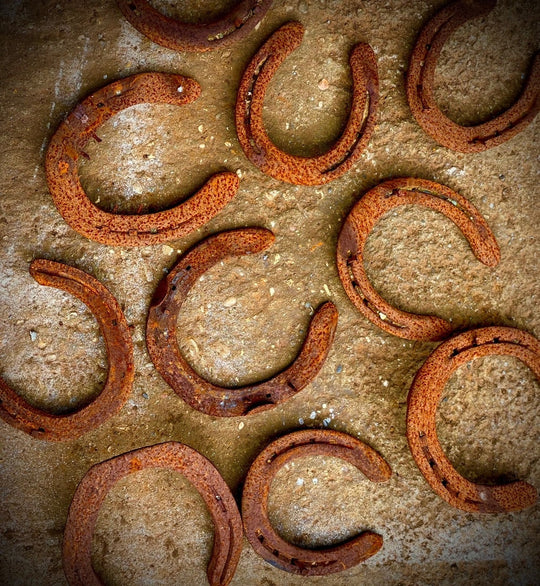
To find one is said to bring good fortune, especially if thrown by a horse. The custom was to hang them on your front door with the open end pointing upwards. This was to prevent the luck from falling out. A horseshoe on the door was also believed to prevent witches from entering your home.
The Ghosts of Thetford Priory, Norfolk
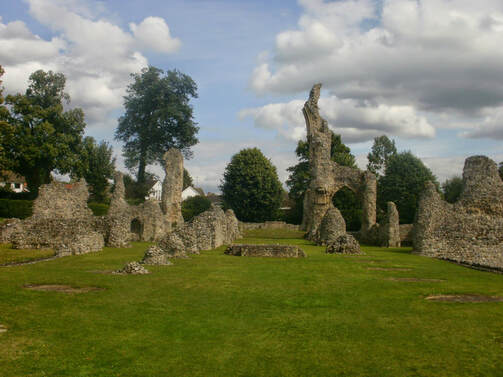
Thetford Priory of the Canons of the Holy Sepulchre dates from the 12th century. As you would expect, ghostly monks have been seen walking through the ruins. Chanting has also been heard. A group of teenagers claimed to have seen one monk running through the grounds in 1992. Jangling keys heralded his appearance.
On another occasion, a monk was seen standing in an upstairs window. The full account can be read by clicking here: LINK
Summer evenings are said to be the ideal time to see and hear the phantom brothers.
On another occasion, a monk was seen standing in an upstairs window. The full account can be read by clicking here: LINK
Summer evenings are said to be the ideal time to see and hear the phantom brothers.
The Woolpit Wolf
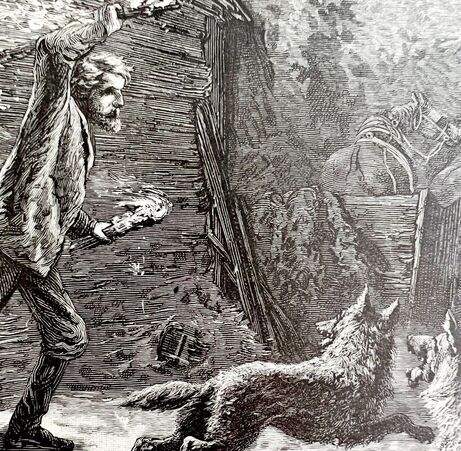
The Suffolk village of Woolpit is thought to take its name from pits dug to trap wolves. The area is said to have been the haunt of one such animal, caught and killed centuries ago. A farmer was once out looking for a lost calf and claimed to have seen it emerge from a hole in the ground. He rushed for his gun but lost it in the moonlight. He then noticed that it had left no footprints and concluded that he had seen the phantom wolf.
For some reason, the ghostly wolf is only said to appear after a fall of snow.
For some reason, the ghostly wolf is only said to appear after a fall of snow.
Southwold Ghosts & Monsters
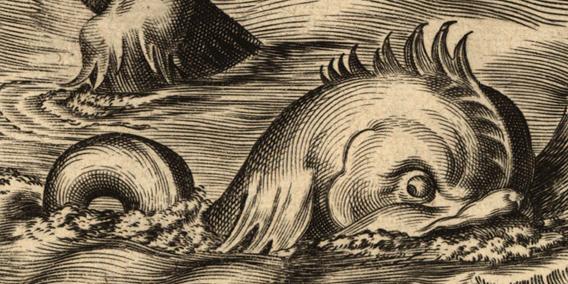
The small town of Southwold has a few interesting legends attached to it. Gun Hill is said to be haunted by the figure of a soldier. He is always seen standing next to one of the six cannons that can be found on the hill. He lost his head when one
misfired. Sutherland House is home to a phantom lady. The red-headed apparition is said to be waiting for the return of Lord Sandwich, who was killed in the Battle of Sole Bay in 1672. Footsteps and the sound of doors opening have been heard on May 28, the anniversary of the Lord's death. The waters off Southwold were also once the haunt of a strange creature. On October 2, 1938, local fishermen claimed to have seen a grey-coloured sea monster swimming near their boat. The beast was described as being over 65 feet long.
misfired. Sutherland House is home to a phantom lady. The red-headed apparition is said to be waiting for the return of Lord Sandwich, who was killed in the Battle of Sole Bay in 1672. Footsteps and the sound of doors opening have been heard on May 28, the anniversary of the Lord's death. The waters off Southwold were also once the haunt of a strange creature. On October 2, 1938, local fishermen claimed to have seen a grey-coloured sea monster swimming near their boat. The beast was described as being over 65 feet long.
The Sudbury Head, Suffolk
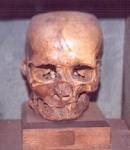
St. Gregory’s church in Sudbury is said to be haunted by the ghost of Simon de Sudbury, Archbishop of Canterbury, who was murdered during the Peasant’s Revolt of 1381. His skull is still preserved in a case in the church. A truly grizzly exhibit!
His body was buried in Canterbury Cathedral. Some believe that his ghost is still restless because he wishes for his head to be reunited with his body.
His body was buried in Canterbury Cathedral. Some believe that his ghost is still restless because he wishes for his head to be reunited with his body.
Potsford Gibbet, Suffolk
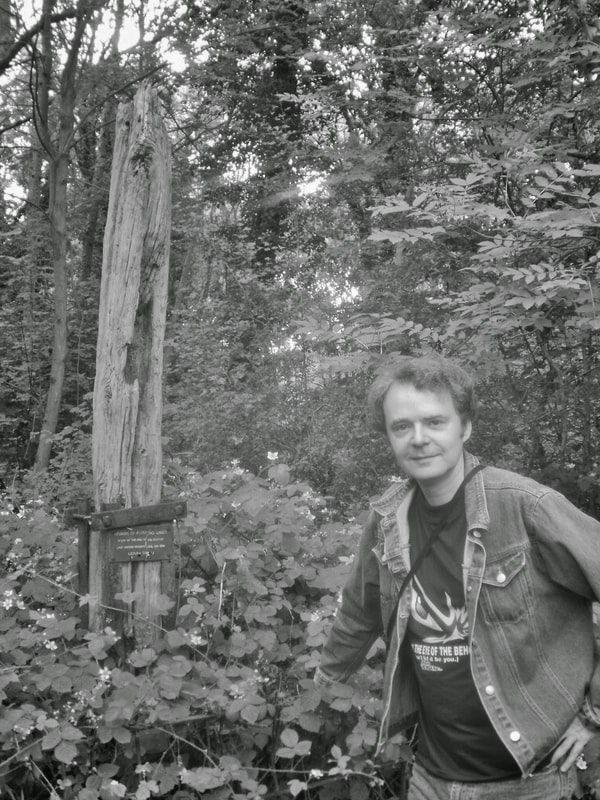
Potsford Wood, off the B1078, can be a spooky place even on the brightest of days. Halfway down a long and overgrown lane are the rotting remains of Potsfold Gibbet. It was last used on April 14, 1699, when Jonah Snell was executed for the murder of John Bullard and his son at the nearby Letheringham Water Mill. He killed them with an axe, bizarrely hanging them upside down from a beam in the mill after committing the dreadful deed. His victims are said to haunt the mill.
Snell's body was left to rot on the gibbet as a warning to others. He was later buried nearby after his skeleton fell to the ground. Presumably, it is still there!
Many locals will not visit the wood, and some claim that they have seen strange lights hovering near the gibbet. Groans and chocking sounds have also been heard and a figure in black has been seen standing near the gibbet. In 1997, a couple reported being harassed by a black figure that moaned at them one night after their car had broken down on the main road. In the 1980s, another sighting supposedly took place in daylight: a truck driver walked down the lane and started reading the plaque on the gibbet. He felt a tap on his shoulder. Turning back, he found himself looking at a hooded skeleton wearing a robe. He fled in terror.
I should add that sometimes apparitions seen in this wood can have a more down to earth explanation! I was once talking to a retired poacher who used to 'visit' the woods. During one such expedition, he spotted several white figures standing by some trees. They did not move and continued to stare blankly ahead, apparently unaware of his presence. He fled the scene. The next morning, he decided to return to the woods to see if he could find a rational explanation for the eerie apparitions. Imagine his surprise when he noticed that the figures were still there! It was only when he came within 20 feet of them that he realised what they were - someone had dumped several stolen garden statues in the wood! One can only wonder if some of the other stories concerning ghostly sightings in Potsford Wood were invested by the local poaching fraternity. It is hardly surprising that they would have a vested interest in ensuring people avoided the area, especially at night!
According to tradition, there was a large stone or boulder next to the gibbet that screamed if you kicked it with your heel. Whether this story started circulating after the execution of Jonah Snell is not known. It appears that the stone has long since vanished, as I failed to locate it during a visit to the wood.
Death Traditions
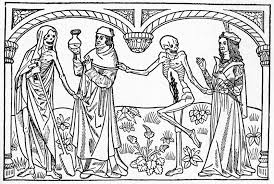
Hearing three knocks in an empty room means that someone known to you has passed away.
Don't leave your shoes on the table! It can bring sickness and even death, according to folklore.
Experiencing a chill up your spine means that someone has just walked over your future grave.
Some cultures believe that tombstones prevent the souls of the dead from leaving their graves.
Coffee grounds in a straight line at the bottom of your cup? You can expect an impending funeral.
Touch a loved one who has died, and you won’t have dreams about them.
Don't leave your shoes on the table! It can bring sickness and even death, according to folklore.
Experiencing a chill up your spine means that someone has just walked over your future grave.
Some cultures believe that tombstones prevent the souls of the dead from leaving their graves.
Coffee grounds in a straight line at the bottom of your cup? You can expect an impending funeral.
Touch a loved one who has died, and you won’t have dreams about them.
The Devil in Suffolk
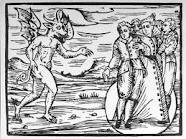
St. Peter's Church dates back to about 1300. A local legend claims that ‘Old Nick’ himself lives below a small grating near a door in the church. Near this is a 14th century fallen gravestone known as the ‘Witches’ Stone’. It is claimed that grass will not grow over it. It is said that if you put a piece of straw in the grating and run around the church seven times, anti-clockwise, the straw will either vanish or you will hear the Satan rattling his chains below the surface. A word of warning: if you do decide to carry out this ritual, you must never look at the grating until the end of your run! A local man told me that this story was invented by smugglers to deter locals from visiting the churchyard at night. Smugglers were believed to have used the crypt to hide contraband from the revenue men!
Walling up cats
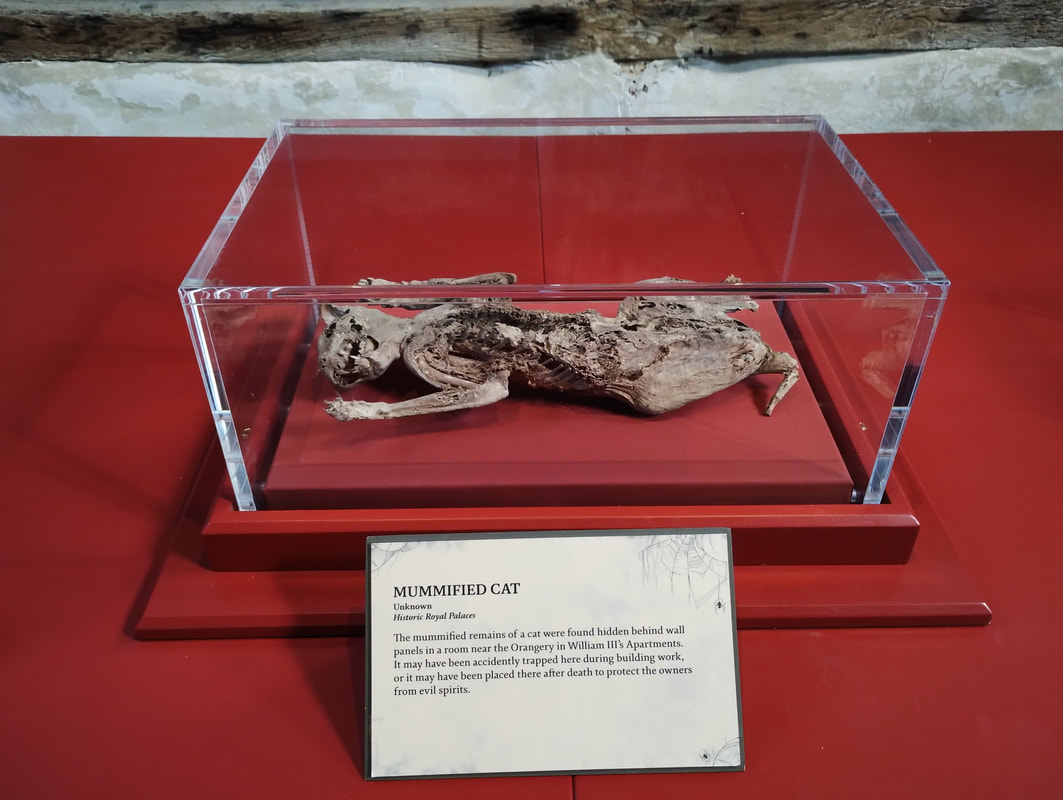
The practice of walling up a cat, often with the animal still alive, was a medieval attempt to protect a building against evil spirits and witches. This tradition survived in places like East Anglia until the 19th century.
This mummified example can be found on display at Hampton Court.
This mummified example can be found on display at Hampton Court.
The Mermaid's Pool
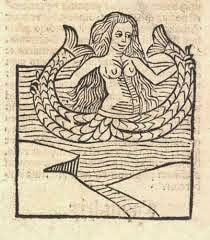
Somewhere in Rendlesham Forest, there was an S-shaped pond with a very sinister reputation. Children in the 19th century were warned to stay away from it 'lest the mermaid should come and crome you in'. Crome was a long-handled rake. Some folklorists believe that these legends of water bogeys are, in fact, distorted memories of water spirits that were worshipped by our pagan ancestors. Others suggest that such tales were simply invented by parents to deter their children from playing near water.
Walking on a grave
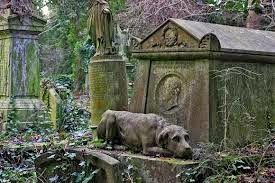
It has always been considered unlucky to walk on a grave. Not only was it thought disrespectful, but you risked being grabbed by the spirit of the person buried there. Pregnant women were advised not to walk over graves, as it could result in their child being born with a club foot.
The Devil in Norfolk
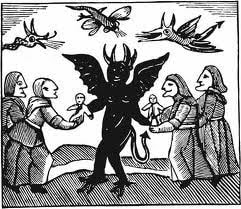
Burgh St. Peter was once supposed to be one of the regular haunts of the Devil. There was a stile in a field leading into the main road, upon which he was said to sit once a year. The locals were not certain of the exact day and so shunned it all year round just to be on the safe side!
Animal Omens
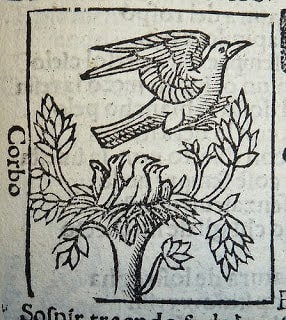
According to folklore, the appearance of a crow could bring good or bad luck. Seeing a lone crow meant bad tidings were coming your way. Seeing two crows together promised good fortune for you.
Dogs were also seen as a way to predict future events. If a dog howled three times, it meant someone you knew was going to die. It was also regarded as a very bad omen if a dog howled at night in or near a home where someone was sick. However, you could protect yourself from this particular death omen by turning over a shoe placed under the bed!
A bird flying into your home indicated that important news would be coming your way.
Dogs were also seen as a way to predict future events. If a dog howled three times, it meant someone you knew was going to die. It was also regarded as a very bad omen if a dog howled at night in or near a home where someone was sick. However, you could protect yourself from this particular death omen by turning over a shoe placed under the bed!
A bird flying into your home indicated that important news would be coming your way.
The Monkees and The Beatles
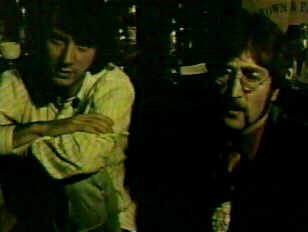
In 1967, the Monkees were at the height of their fame. They were selling millions of records, had a hit TV series, and were the idols of millions across the globe. They were naturally keen to meet the group that had started the 60's swinging.
Monday, February 6: Micky meets Paul McCartney at a London disco and is invited back to McCartney's house in St. John's Wood. Paul treats Micky to previews of 'Penny Lane' and Strawberry Fields Forever'. He also entertains Micky by playing a left-handed sitar. They later travel to Brian Epstein's flat to watch films of the Spencer Davis group and Cream. Later in the month (21st), Micky will attend sessions for Paul's "Fixing A Hole" at the Abbey Road Studios.
“I got dressed up like I was going to a major party — a Beatlemania funfest, freak-out psycho Jell-O thing,” saying he wore “paisley bell-bottoms, tie-dyed underwear, and my hair up in beads and the Lennon glasses. I looked like a cross between Ronald McDonald and Charlie Manson. I show up, and there’s nobody there except the four guys. The place looks like my high school gymnasium, with fluorescent lighting. And there’s just the four guys sitting there playing. I was so wiped out. I was like, ‘Where are the girls?!'”
John Lennon greets him with the words, "Hey Monkee Man. Want to hear what we are working on?" Micky also gets to hear a playback of "Good Morning, Good Morning". He later gets permission to use the track on the Dolenz-directed episode 'The Frodis Caper', the very last episode of the Monkees TV show, broadcast on March 25th,1968.
Friday, February 10: Mike attends a five-hour recording session at Abbey Road Studio 1 for the Beatles' song 'A Day In The Life'. One take features Mike singing the notes A and E. A short clip of the Monkee sitting with John is later used in the promo for the song. Mike is later invited back to John Lennon's house to listen to acetates from the forthcoming Sgt. Pepper album. Cynthia Lennon, John's first wife, later recalled that Mike's wife irritated her by criticising the food she'd prepared for them.
Monday, February 6: Micky meets Paul McCartney at a London disco and is invited back to McCartney's house in St. John's Wood. Paul treats Micky to previews of 'Penny Lane' and Strawberry Fields Forever'. He also entertains Micky by playing a left-handed sitar. They later travel to Brian Epstein's flat to watch films of the Spencer Davis group and Cream. Later in the month (21st), Micky will attend sessions for Paul's "Fixing A Hole" at the Abbey Road Studios.
“I got dressed up like I was going to a major party — a Beatlemania funfest, freak-out psycho Jell-O thing,” saying he wore “paisley bell-bottoms, tie-dyed underwear, and my hair up in beads and the Lennon glasses. I looked like a cross between Ronald McDonald and Charlie Manson. I show up, and there’s nobody there except the four guys. The place looks like my high school gymnasium, with fluorescent lighting. And there’s just the four guys sitting there playing. I was so wiped out. I was like, ‘Where are the girls?!'”
John Lennon greets him with the words, "Hey Monkee Man. Want to hear what we are working on?" Micky also gets to hear a playback of "Good Morning, Good Morning". He later gets permission to use the track on the Dolenz-directed episode 'The Frodis Caper', the very last episode of the Monkees TV show, broadcast on March 25th,1968.
Friday, February 10: Mike attends a five-hour recording session at Abbey Road Studio 1 for the Beatles' song 'A Day In The Life'. One take features Mike singing the notes A and E. A short clip of the Monkee sitting with John is later used in the promo for the song. Mike is later invited back to John Lennon's house to listen to acetates from the forthcoming Sgt. Pepper album. Cynthia Lennon, John's first wife, later recalled that Mike's wife irritated her by criticising the food she'd prepared for them.
Mince Pies
Mince pies were originally known as Christmas pies and contained a variety of meats as well as fruit and spices.
Christmas pies used to be oblong or square in shape. They were known as ‘crib pies’ because they were similar in shape to the manger. They would also feature the figure of the baby Jesus on the crust. These later came to be known as mince pies and contained ingredients similar to the ones we use today.
Another name for them was ‘wayfarers’ pies, since they were given to visitors during the Christmas period. It was thought to be lucky to eat twelve mince pies in twelve different houses during the twelve days of Christmas to ensure a prosperous year ahead.
Christmas pies used to be oblong or square in shape. They were known as ‘crib pies’ because they were similar in shape to the manger. They would also feature the figure of the baby Jesus on the crust. These later came to be known as mince pies and contained ingredients similar to the ones we use today.
Another name for them was ‘wayfarers’ pies, since they were given to visitors during the Christmas period. It was thought to be lucky to eat twelve mince pies in twelve different houses during the twelve days of Christmas to ensure a prosperous year ahead.
Crackers
Christmas crackers have a relatively recent origin. A Victorian confectioner, Tom Smith, visited Paris and noticed bon-bon sweets being sold in colourful twisted paper tubes. He brought the idea back to England and developed it by placing a small love motto and gift inside. The 'snap' was added after he heard a crackling log in his fireplace. It was first known as the Cosaque (Cossack), but was soon replaced by the name cracker. The hat was later added by his son, Walter Smith.
The wearing of festive hats dates back to Roman times and the Saturnalia celebrations.
The wearing of festive hats dates back to Roman times and the Saturnalia celebrations.
Holly
Many people hang a holly wreath on their door at Christmas, but few realise the tradition behind this.
Christmas was thought to be a particularly dangerous time, as ghosts were said to be more active during the festive season. Holly was believed to protect households from supernatural forces, as it was felt that any troublesome spirits would be caught up in the prickly leaves as they tried to enter the home. Unmarried women would tie a piece of holly on their beds as protection from the spirit world. Holly leaves would also be placed underneath the pillow in the belief that the person sleeping would dream of their future.
Christmas was thought to be a particularly dangerous time, as ghosts were said to be more active during the festive season. Holly was believed to protect households from supernatural forces, as it was felt that any troublesome spirits would be caught up in the prickly leaves as they tried to enter the home. Unmarried women would tie a piece of holly on their beds as protection from the spirit world. Holly leaves would also be placed underneath the pillow in the belief that the person sleeping would dream of their future.
Kissing under the mistletoe
The ancient Druids believed that mistletoe could cure infertility and illness and ward off evil. They held it especially sacred, as it remained green even in the harshest of winters. In Roman times, enemies would settle their differences under the mistletoe. To them, it was a symbol of friendship. Kissing under the mistletoe was largely an English tradition. It was said that a kiss beneath it would bring luck, lasting friendship, or even love. You were also supposed to pluck one of the berries from the mistletoe after each kiss. When all the berries were gone, the kissing was to stop. The idea of kissing under the mistletoe is thought to have originated in Scandinavia. Loki, according to Norse legend, made an arrow out of mistletoe and used it to kill Balder, the sun god. Balder's mother, Frigga, revived her son and declared that the mistletoe would forever become a symbol of love and peace.
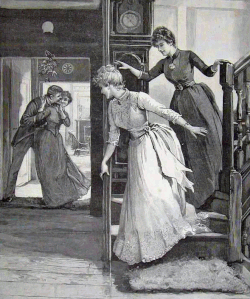
Roos Hall, Suffolk
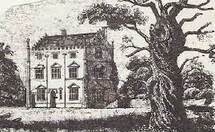
The grounds of this Tudor hall are said to be haunted every Christmas Eve by a coach driven by headless horses. Another ghost is that of a lady who sometimes appears near the coach. You must never look into her eyes. If you do, you will go mad or die! The building also boasts the apparition of a little girl and a bedroom cupboard with a burn mark on the brickwork. Legend says that the Devil made it with his cloven hoof. One of the windows in the hall can never be kept shut. Even a local blacksmith's attempts to seal it failed. A nearby tree is known as Nelson's Tree or the Hanging Tree. It was used to hang local criminals, and some claim that a lady in white and a man in torn trousers and a brown jacket still haunt the place where they died. Chains from the hangings are still said to be embedded in the bark. The Devil himself may appear if you decide to circle the tree six times.
Bealings Bells
In 1834, Bealings House became notorious due to an outbreak of alleged poltergeist activity. The haunting began on Sunday, February 2, 1834. The owner, Edward Moor, arrived home from church and was informed by his servants that the dining room bell had mysteriously rung three times between 2 and 5 p.m. The bells again rang at the same time on the following day. The day after, when Moor returned home, servants again told him that the bells had been violently ringing in the kitchen. He went into the room and finally witnessed the ringing himself. They chimed so violently that he thought the bells would break free from their anchors. They continued like this until about 7:45 p.m. The bells rang numerous times before the phenomenon stopped abruptly on March 27. Sceptics suggested that the supposed paranormal activity was caused by mice running along the wires. Others declared that the whole affair was a deliberate hoax. Major Moor thought otherwise. He later wrote a book, Bealings Bells, about the haunting.
Mildenhall Tales
Oliver Cromwell, who became Lord Protector in 1653, was said to have buried chests containing treasure in a group of ancient barrows known as the Three Hills. Despite several attempts to locate the hoard, the chests remain hidden. RAF Mildenhall is said to be haunted by the ghost of an American airman. In 1969, a homesick sergeant got drunk and stole a C-130 cargo plane. He crashed into the ocean after supposedly trying to make it back to the USA. His body was never found. His ghost reportedly wanders the parking area where he took off on his last flight.
The Tree of Death
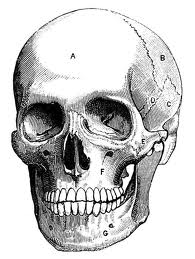
Green Park in London was the setting for a tree that was alleged to be saturated with evil. It was known as the Tree of Death due to the large number of tragic events that unfolded beneath it.
In the 18th century, duels were fought there, and it was said that the sound of musket fire and heavy breathing could be heard beneath the tree at dawn. The area around the tree was also the scene of murders, rapes, robberies, and suicides.
In 1820, a young man shot himself by the tree after his wife and children were killed in a fire. After this, a figure in black was seen standing near the trunk. It always vanished if anyone approached it. Sinister sounds were also heard, including groans, mocking laughter, and whispering.
In the 18th century, duels were fought there, and it was said that the sound of musket fire and heavy breathing could be heard beneath the tree at dawn. The area around the tree was also the scene of murders, rapes, robberies, and suicides.
In 1820, a young man shot himself by the tree after his wife and children were killed in a fire. After this, a figure in black was seen standing near the trunk. It always vanished if anyone approached it. Sinister sounds were also heard, including groans, mocking laughter, and whispering.
Old Wives' Tales
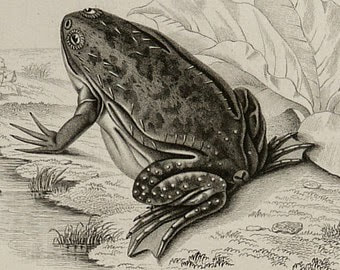
Touch a toad, and you'll get warts!
Want to rid yourself of a wart? Try rubbing it with a piece of potato and then burying the potato in your garden. The wart will vanish as the potato rots.
Pick a dandelion, and you'll wet the bed.
Biting your tongue during a meal means that you've recently told a lie.
Want to rid yourself of a wart? Try rubbing it with a piece of potato and then burying the potato in your garden. The wart will vanish as the potato rots.
Pick a dandelion, and you'll wet the bed.
Biting your tongue during a meal means that you've recently told a lie.
Haunted Dallinghoo in Suffolk
A legend has it that under a certain gatepost in Dallinghoo lies a hidden treasure. The ghost of the former owner haunts the site to protect his hoard; even the efforts of twelve clergymen failed to send him on his way. Attempts to locate the treasure are now fruitless, as no one can remember where the gatepost stood. Another ghost also haunts the area. A widow by the name of Shawe cut her throat and was later witnessed haunting the lanes around the village. She is always seen without her feet. It could be that her spirit is simply a recording, and she is walking on an earlier ground level.
Haunted Bungay, Suffolk
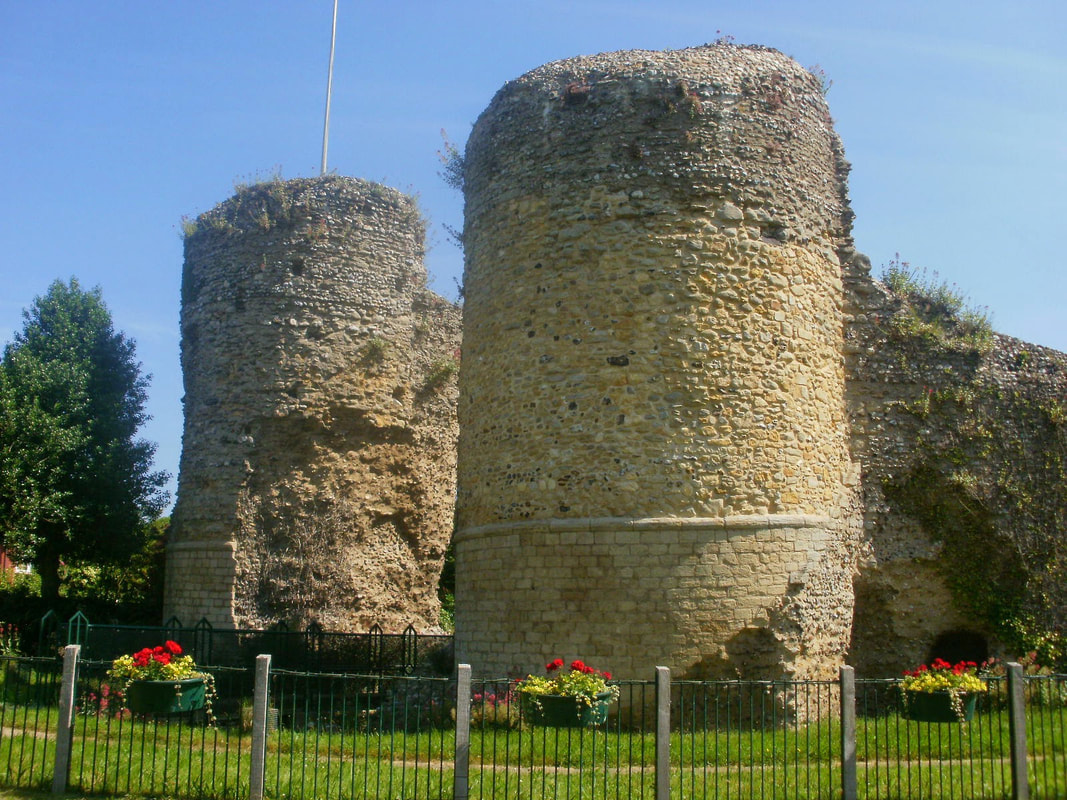
The ruins of the Norman castle can be found in the town centre. The former owners, the Bigods, were said to be notorious for their wickedness and were doomed to haunt the castle as a penance for all their naughty goings-on. On certain nights, they are supposed to appear in a coach drawn by four horses - the beast's mouths and nostrils issuing flames and smoke. It is driven by the obligatory headless coachman with his head under his arm. And to cap it all, the hooves of the horses burst into flames as they hit the ground. The coach travels from the town to Geldeston in Norfolk, past the church, down Lover's Lane into Bigod's Hill Lane, and then back home to the castle. The coach is never both seen and heard. You either see it or just hear it rumbling by. Is this the same ghostly coach that is supposed to ride from Bungay to Ditchingham and force motorists off the road by driving at them? One member of the Bigod family, Hugh, is also said to haunt the castle grounds as a black dog. Or is it just Black Shuck, East Anglia’s legendary Hell Hound, up to his old tricks again?
The Three Tuns pub is also reputed to be haunted. In 1969, it was claimed to have 24 ghosts, including Tom Hardy, an 18th century highwayman, who used the pub to plan his robberies. He was later executed. Another ghost is that of Rex Bacon. He supposedly hanged himself in the building after killing his wife's lover in 1682. It should be pointed out that this information was obtained by a landlady who used a Ouija board. Checks of local records can find no trace of either man. During one seance there, a certain Mr. Beckett claimed to have seen a white figure standing in the corner of a room. And a former assistant manager, Mr. Blakeway, said he had witnessed a window open and close by itself. No ghosts have been reported since the removal of a wall dating back to the 1500s.The nearby King's Head can boast of at least one ghost. Strange sounds have been reported, including creaking floorboards.
The ruined Greyfriars Priory in the grounds of St. Mary's has an auditory haunting. The sounds of chanting and the ringing of bells have been reported at night from time to time. A ghostly black dog has also been seen in the churchyard. Perhaps this is Black Shuck making a return visit to the area. On August 4, 1577, he was said to have entered the church during a violent storm, running up the nave and killing two people. He then moved on to Blythburgh Church, where he mauled and killed a man and a boy. The Druid's Stone in the church grounds has an interesting legend attached to it. Folklore and local gossip claim that it was used by the druids in religious ceremonies over 2000 years ago. It is interesting to note that churches were often built on pagan shrines, and so the stone could have formed part of such a structure. Others claim it was brought to the churchyard from Bungay Castle after the castle fell into ruin. But why would someone go to the trouble of doing this for no apparent purpose? It is said that you can call up the Devil by dancing around the stone twelve times. You have been warned!
The Three Tuns pub is also reputed to be haunted. In 1969, it was claimed to have 24 ghosts, including Tom Hardy, an 18th century highwayman, who used the pub to plan his robberies. He was later executed. Another ghost is that of Rex Bacon. He supposedly hanged himself in the building after killing his wife's lover in 1682. It should be pointed out that this information was obtained by a landlady who used a Ouija board. Checks of local records can find no trace of either man. During one seance there, a certain Mr. Beckett claimed to have seen a white figure standing in the corner of a room. And a former assistant manager, Mr. Blakeway, said he had witnessed a window open and close by itself. No ghosts have been reported since the removal of a wall dating back to the 1500s.The nearby King's Head can boast of at least one ghost. Strange sounds have been reported, including creaking floorboards.
The ruined Greyfriars Priory in the grounds of St. Mary's has an auditory haunting. The sounds of chanting and the ringing of bells have been reported at night from time to time. A ghostly black dog has also been seen in the churchyard. Perhaps this is Black Shuck making a return visit to the area. On August 4, 1577, he was said to have entered the church during a violent storm, running up the nave and killing two people. He then moved on to Blythburgh Church, where he mauled and killed a man and a boy. The Druid's Stone in the church grounds has an interesting legend attached to it. Folklore and local gossip claim that it was used by the druids in religious ceremonies over 2000 years ago. It is interesting to note that churches were often built on pagan shrines, and so the stone could have formed part of such a structure. Others claim it was brought to the churchyard from Bungay Castle after the castle fell into ruin. But why would someone go to the trouble of doing this for no apparent purpose? It is said that you can call up the Devil by dancing around the stone twelve times. You have been warned!
George Orwell and haunted Walberswick in Suffolk
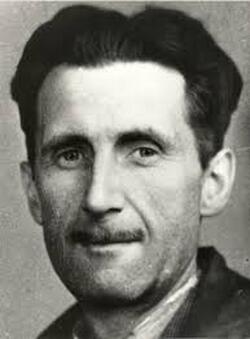
The church in Walberswick has been haunted for many years by the figure of a small, stooping man. George Orwell claimed to have seen him on July 22, 1931. He was sketching when he noticed a small man dressed in brown enter the churchyard and head towards the church. Orwell followed him but found that he had vanished through a locked door. No one knows who the ghost could be. The nearby common is haunted by a phantom dog and the sound of galloping horses. The old railway line has a sinister reputation. Strange moaning sounds have been heard along the overgrown track. Locals claim that dogs and horses are reluctant to walk there.
Churchyard Folklore
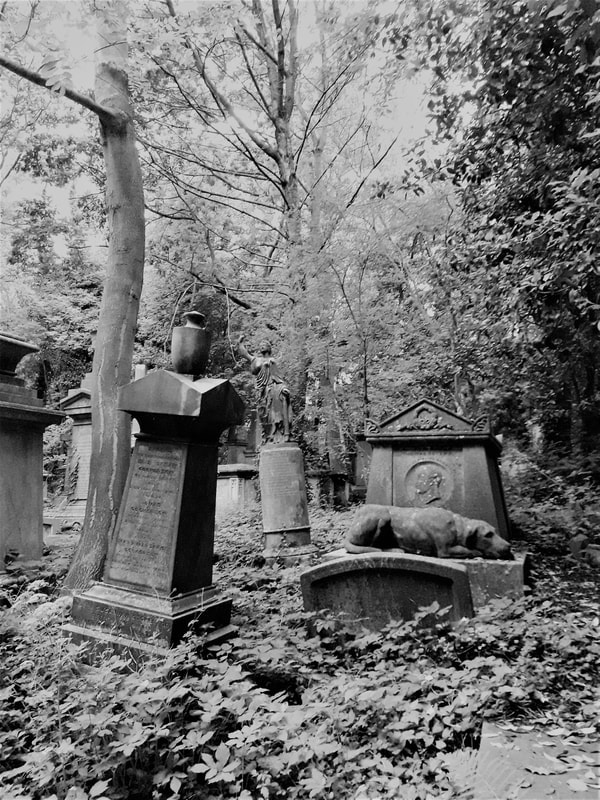
You would expect graveyards to be full of ghosts. However, this is not the case!
There is a tradition that only the spirit of the first person to be buried there is destined to haunt the place. Legend claims it has to protect the graves of all those who are buried after them.
It is also said that flowers will grow on a grave if the person led a good life. Weeds growing on a grave are said to indicate that the person was wicked in life.
It is supposed to be bad luck to meet a funeral procession heading towards you. If this can't be avoided, then hold onto a button until it passes, and that should prevent any bad luck from coming your way. A funeral procession should never return from the graveyard the same way it came. This is to prevent the spirit of the deceased from following the living home.
There is a tradition that only the spirit of the first person to be buried there is destined to haunt the place. Legend claims it has to protect the graves of all those who are buried after them.
It is also said that flowers will grow on a grave if the person led a good life. Weeds growing on a grave are said to indicate that the person was wicked in life.
It is supposed to be bad luck to meet a funeral procession heading towards you. If this can't be avoided, then hold onto a button until it passes, and that should prevent any bad luck from coming your way. A funeral procession should never return from the graveyard the same way it came. This is to prevent the spirit of the deceased from following the living home.
Castle Rising, Norfolk
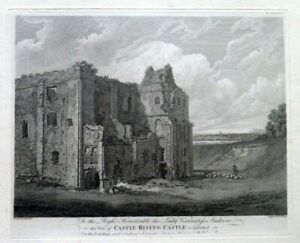
The 12th century Norman keep is said to be haunted by Queen Isabella, mother of Edward III. She was having an affair with Roger Mortimer, the Earl of March, and had her husband, Edward II, murdered to secure power for herself and her lover.
Edward III eventually seized power from his mother and had Mortimer executed. It is claimed that he then had Isabella imprisoned in the castle. She eventually went mad and died there in 1358. Since then, her tortured screams have been reported echoing from the upper rooms of the keep. Sadly, much of the legend surrounding this tale is untrue. Isabella did indeed live at the castle but was free to travel to her other properties and died in Hertford in 1358. She was buried in the grounds of Christ Church Greyfriars, London. Her ghost is said to haunt the site of the graveyard, holding the heart of Edward II in her hands. However, people still claim to hear screams and maniacal laughter coming from the castle in the early hours of the morning. So if not Isabella, who or what is behind the terrifying sounds?
Edward III eventually seized power from his mother and had Mortimer executed. It is claimed that he then had Isabella imprisoned in the castle. She eventually went mad and died there in 1358. Since then, her tortured screams have been reported echoing from the upper rooms of the keep. Sadly, much of the legend surrounding this tale is untrue. Isabella did indeed live at the castle but was free to travel to her other properties and died in Hertford in 1358. She was buried in the grounds of Christ Church Greyfriars, London. Her ghost is said to haunt the site of the graveyard, holding the heart of Edward II in her hands. However, people still claim to hear screams and maniacal laughter coming from the castle in the early hours of the morning. So if not Isabella, who or what is behind the terrifying sounds?
The ghosts of Barsham, Norfolk
Barsham's main claim to fame is that Lord Nelson's mother, Catherine Suckling, was born here in 1725. It can also boast a haunted church. Footsteps have been heard in the chancel, and the apparition of a lady dressed in Georgian clothes has been seen in the building. Lights have also been known to switch on and off by themselves. Some claim the phantom to be the ghost of Nelson's mother. Why she should haunt the church, if it is indeed her, has yet to be explained. The churchyard is also haunted by figures of people in medieval dress. A nearby plague pit is held to be the reason why these spirits still linger here. The nearby rectory has a room with a priest hole. It is claimed to be haunted by ghostly lights and footsteps. A poltergeist has been known to move objects in other parts of the rectory. Finally, a phantom coach and headless horses are said to appear in the village every Christmas Eve. It makes for Hassets Tower in Norwich and is said to carry members of the Blennerhassett family. The coach always returns to the village before sunrise.
St Mark's Eve
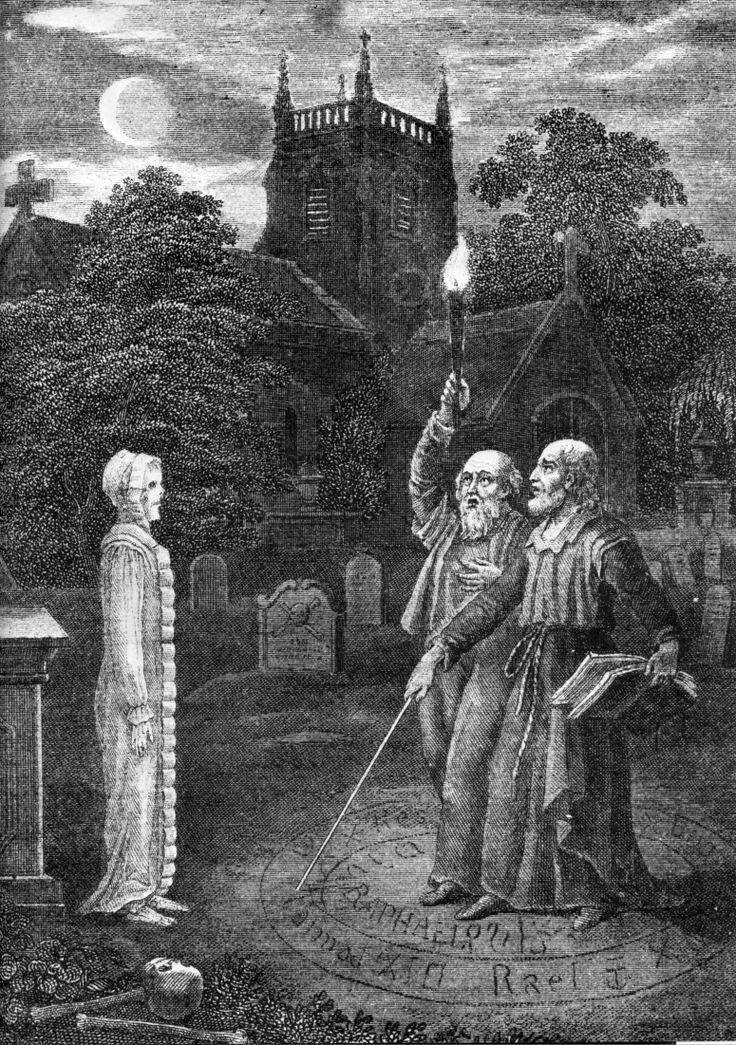
It was believed that the spirits of those destined to die in the parish over the coming year appeared on St. Mark's Eve (24th April). You had to sit in the porch of the church for three hours starting at 11 p.m. if you wanted to see the ghosts. You had to do this for three successive nights. The third night would see the spirits come up the path and enter the church.
Those fated to die first would be at the front of the procession, and those destined to live out most of the year would be last to enter the church. Stories were told of watchers sometimes seeing themselves in the procession!
It was considered dangerous to fall asleep during the vigil - to do so would invite death within a year!
Those fated to die first would be at the front of the procession, and those destined to live out most of the year would be last to enter the church. Stories were told of watchers sometimes seeing themselves in the procession!
It was considered dangerous to fall asleep during the vigil - to do so would invite death within a year!
Strange Customs
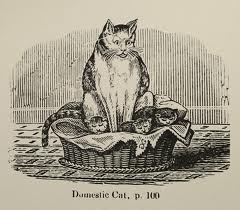
Never sweep a chimney with holly, as it will bring bad luck to your home!
A bride feeding a cat on her wedding day was always considered lucky, as it would bring happiness to her marriage. And the cat, no doubt, would be content too!
In some parts of the UK, it is considered unlucky to see a dead pigeon.
It is regarded as lucky to keep your hat on in church, but only if you are female!
To dream of coal is a sign that one day you will be rich.
A bride feeding a cat on her wedding day was always considered lucky, as it would bring happiness to her marriage. And the cat, no doubt, would be content too!
In some parts of the UK, it is considered unlucky to see a dead pigeon.
It is regarded as lucky to keep your hat on in church, but only if you are female!
To dream of coal is a sign that one day you will be rich.
Epping Forest Ghosts
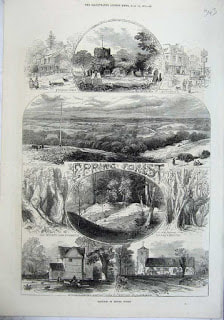
The ancient woodland of Epping Forest in Essex is said to be the home of several ghosts.
Queen Boudica and her daughters haunt Ambresbury Banks, an Iron Age fort near Loughton. Tradition states that it was the site of her last battle against the Romans in AD 61. On certain nights, drumming and mournful groans have also been heard.
The Wake Arms roundabout is a notorious accident black spot and has a selection of ghosts, ranging from phantom horsemen to headless bikers. One phantom is said to run out in front of cars and then vanish!
Dick Turpin, the notorious highwayman, used Epping Forest as a hideout, and his ghost has been seen riding through the trees. Traps Hill is said to be a good place to spot him, if you are so inclined!
A certain pool in the forest was the scene of a murder over 300 years ago. Two young lovers used to meet there in secret. The father of the girl was against the relationship and murdered his daughter by the pool in a fit of anger. Her grief-stricken lover couldn't face life without her and killed himself at the very spot where she was murdered. Following this, the waters turned black, and wildlife shunned the area. It was said that the pool had the power to make people commit suicide after the tragedy.
Rumours of witch covens gathering in the woods for pagan rites persist.
Queen Boudica and her daughters haunt Ambresbury Banks, an Iron Age fort near Loughton. Tradition states that it was the site of her last battle against the Romans in AD 61. On certain nights, drumming and mournful groans have also been heard.
The Wake Arms roundabout is a notorious accident black spot and has a selection of ghosts, ranging from phantom horsemen to headless bikers. One phantom is said to run out in front of cars and then vanish!
Dick Turpin, the notorious highwayman, used Epping Forest as a hideout, and his ghost has been seen riding through the trees. Traps Hill is said to be a good place to spot him, if you are so inclined!
A certain pool in the forest was the scene of a murder over 300 years ago. Two young lovers used to meet there in secret. The father of the girl was against the relationship and murdered his daughter by the pool in a fit of anger. Her grief-stricken lover couldn't face life without her and killed himself at the very spot where she was murdered. Following this, the waters turned black, and wildlife shunned the area. It was said that the pool had the power to make people commit suicide after the tragedy.
Rumours of witch covens gathering in the woods for pagan rites persist.
The Ghost of Newbury Church
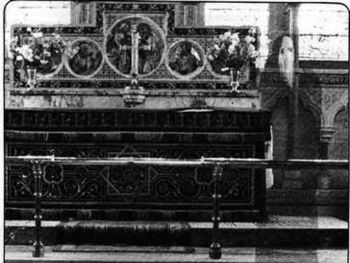
This is considered to be one of the most intriguing photos ever taken of an apparition.
In 1963, the Reverend K.F. Lord took this picture of the altar of his church in Yorkshire. When the photograph was developed, he was shocked to discover a shrouded figure standing in front of the altar.
The photo and negative were thoroughly examined by photographic experts, who confirmed that the figure had not been caused by double exposure. There were also no signs that the photo or negative had been tampered with. Further analysis showed the figure to be at least nine feet tall. However, it should be noted that the figure may have been standing on the top step, with the lower part of the robe hanging over the lower step.
The Church of Christ the Consoler had been built as a memorial to Frederick Vyner, who was captured and murdered by brigands in Greece. His mother used the money collected for his ransom to commission the architect William Burges to build the church (constructed between 1871 and 1876) on the grounds of her home at Newby Hall.
The church did not have a reputation as a haunted building prior to the photo being taken. Nor had it been built on the site of an earlier church or religious building. The apparition has not been seen or photographed since.
In 1963, the Reverend K.F. Lord took this picture of the altar of his church in Yorkshire. When the photograph was developed, he was shocked to discover a shrouded figure standing in front of the altar.
The photo and negative were thoroughly examined by photographic experts, who confirmed that the figure had not been caused by double exposure. There were also no signs that the photo or negative had been tampered with. Further analysis showed the figure to be at least nine feet tall. However, it should be noted that the figure may have been standing on the top step, with the lower part of the robe hanging over the lower step.
The Church of Christ the Consoler had been built as a memorial to Frederick Vyner, who was captured and murdered by brigands in Greece. His mother used the money collected for his ransom to commission the architect William Burges to build the church (constructed between 1871 and 1876) on the grounds of her home at Newby Hall.
The church did not have a reputation as a haunted building prior to the photo being taken. Nor had it been built on the site of an earlier church or religious building. The apparition has not been seen or photographed since.
